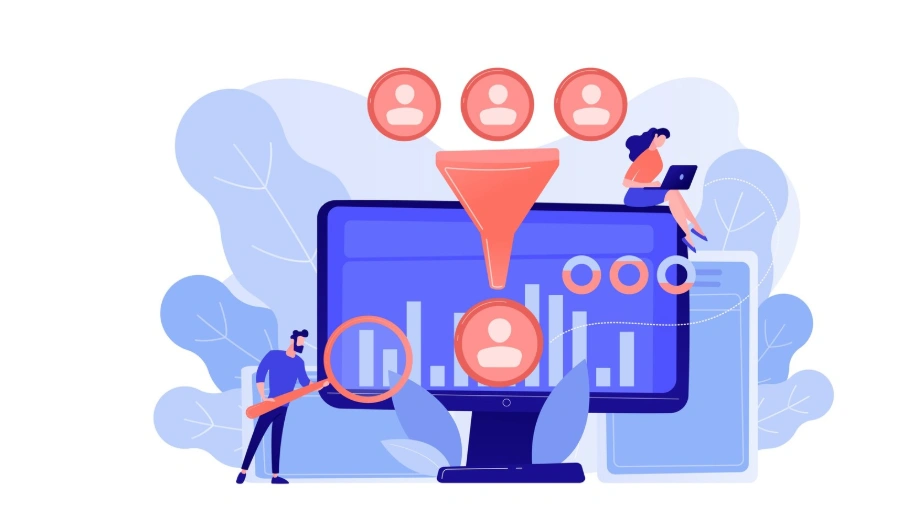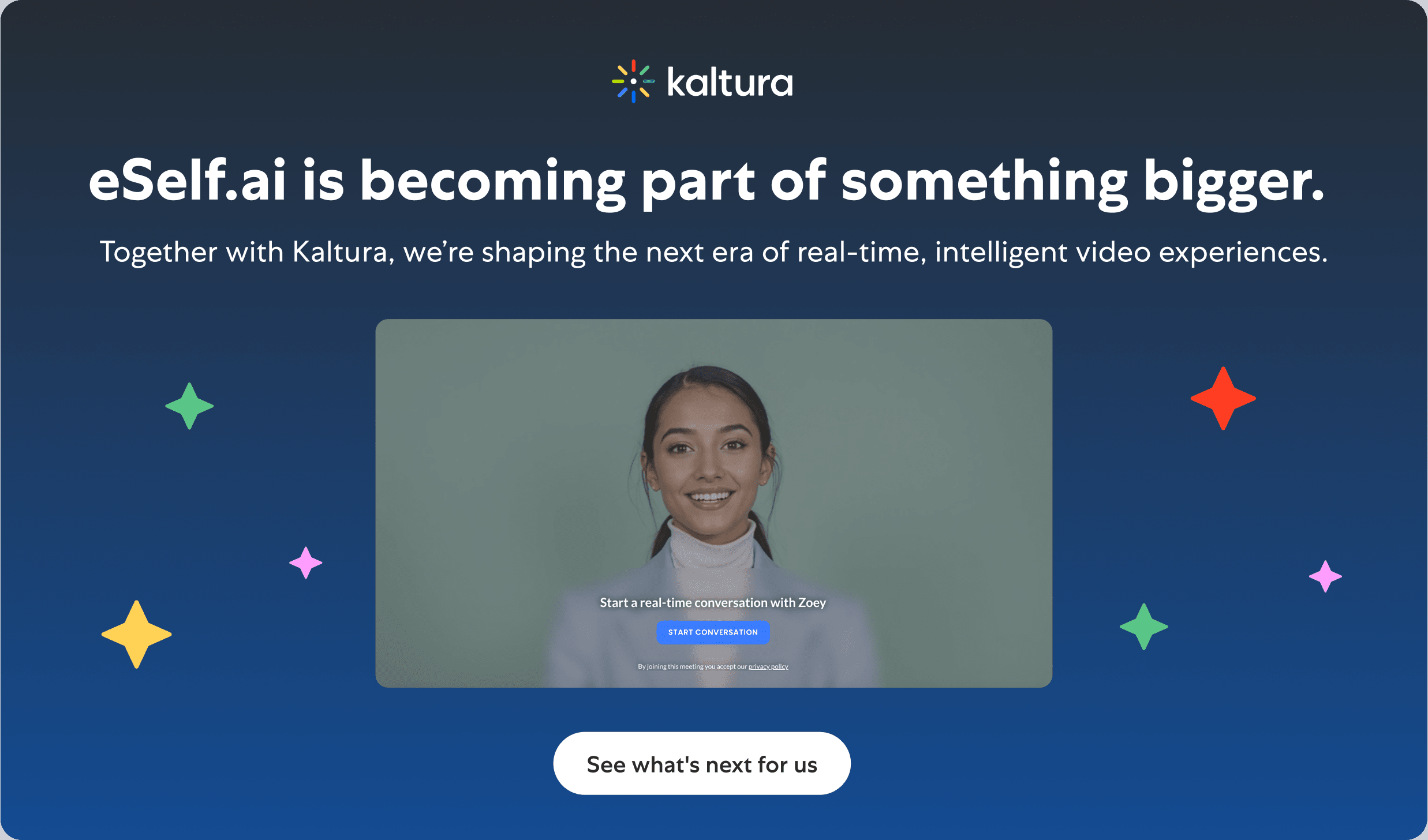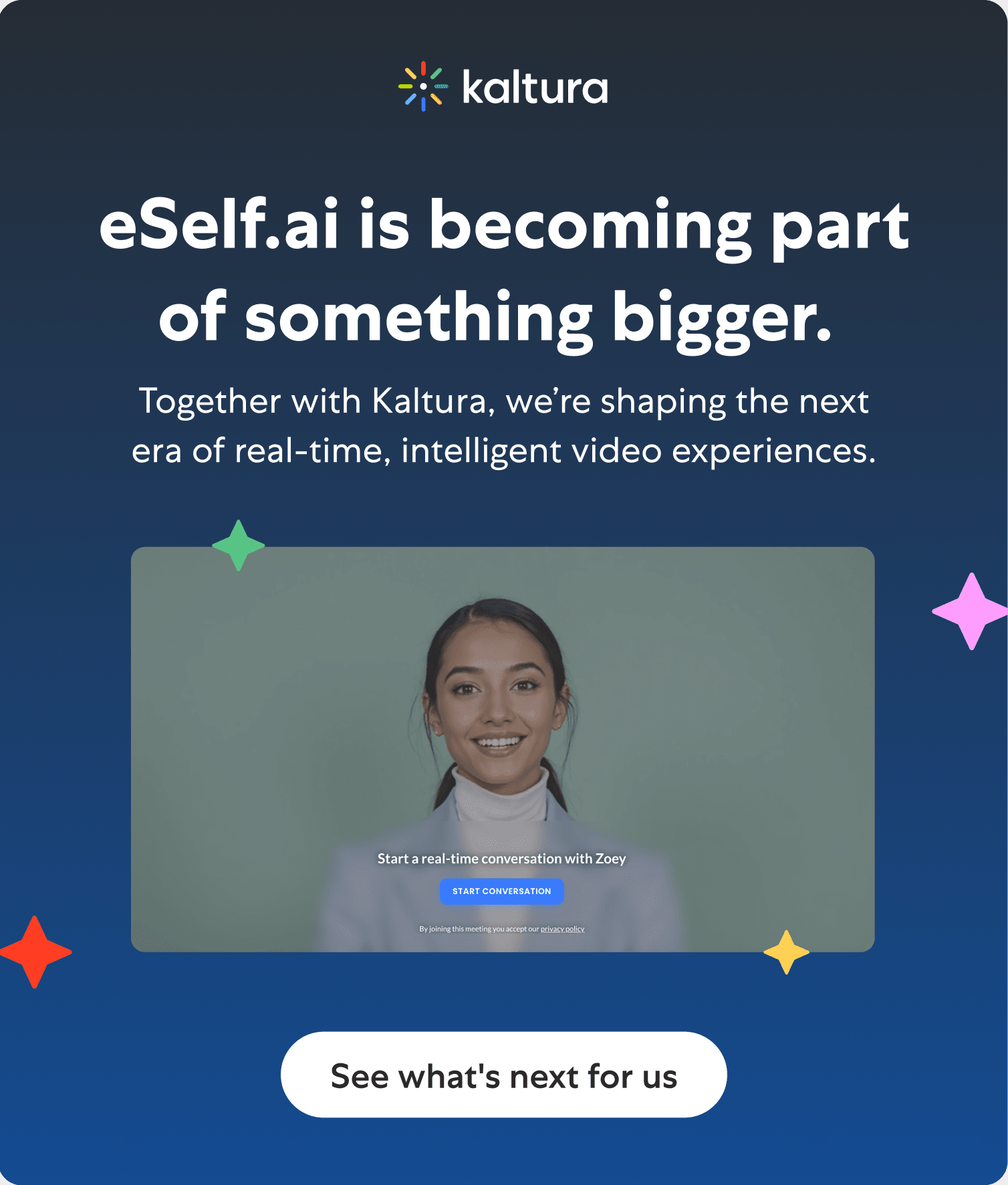Lead qualification is the foundation of a high-performing sales funnel. It allows your sales team to stop chasing and focus on closing. In this guide, we will define the process of lead qualification, explore various frameworks including BANT and CHAMP, and show you how tools like eSelf.ai help your team qualify faster, smarter, and at scale.
What is Lead Qualification?
Lead qualification is the process of determining the suitability and potential of prospective customers. This is the first real decision point in your sales funnel. Two main factors determine whether a lead is qualified:
- Your products meet their needs and address their pain points.
- The prospect can afford your product or service.
The process of determining if a lead qualifies requires collaboration between marketing and sales. When done well, lead qualification helps your teams identify and prioritize which deals to pursue, allowing them to use their time effectively, maintain a healthy sales pipeline, and achieve a strong close rate.
What is the difference between lead scoring and lead qualification?
While these two terms are often used interchangeably, they are distinct concepts. Each has a different way of identifying prospects:
| Aspect | Lead Scoring | Lead Qualification |
| Framework | Quantitative (behavior-based) | Qualitative (conversation-based) |
| Purpose | Ranks leads by potential value | Determine fit and intent |
| Method | Numeric values (eg, activity score) | Discovery and conversation |
| Used by | Marketing and sales | Primarily sales |
| Example | +10 points for email click | “Do you have the budget and authority?” |
Why Lead Qualification is Important?
Every minute you spend on bad leads is a minute lost from hitting your quota. Don’t fall into the trap of chasing every newsletter signup or demo request. The most effective growth happens when you filter your leads using clear lead qualification criteria, making sales lead qualification a strategic advantage.
Benefits of Lead Qualification
- Sales efficiency increases: Qualified leads equal better closing rates. Sales reps who spend time on vetted leads are more likely to convert faster and close more. Tools such as eSelf.ai’s conversational agents can accelerate this process by asking qualifying questions and filtering leads before reps join the discussion.
- Customer relationships start strong: The smoother the lead qualification, the better the conversation. When your leads come in pre-qualified, you don’t have to waste time asking probing questions; you can jump straight into delivering value.
- Forecasts are more accurate: Qualification brings clarity to your pipeline, helping leadership teams plan with precision rather than speculation.
- Marketing and sales align: When your marketing team understands what a qualified sales lead looks like, they can begin optimizing for impact, resulting in higher MQL-to-SQL conversion rates, more effective campaign targeting, and more valuable data for segmentation.
What is the Difference Between Qualified Leads vs. Unqualified Leads?
Understanding the difference between qualified and unqualified leads helps ensure your sales team spends time where it matters most. Here’s a side-by-side comparison:
| Category | Qualified Lead | Unqualified Lead |
| Budget | Confirmed funding | No budget or unclear |
| Authority | Decision-maker is involved | No access to decision-makers |
| Pain Point | Clearly defined | Vague or absent |
| Intent | Researching solutions | Just browsing |
| Timeline | Has urgency | No clear deadline |
The fastest way to distinguish between the two? Ask the right questions at the right time. We will cover these questions in the upcoming lead qualification checklist and step-by-step process.
Common Types of Leads
Not all leads enter your sales funnel in the same way. Thus, context matters. Understanding what is a qualified lead is essential to guiding each type through the appropriate sales journey. Here’s a breakdown of the most common lead types in the lead qualification process:
| Type | Description | Use Case |
| Raw Lead | A contact with no engagement or context | Typically generated from scraped data or list buys |
| Marketing-Qualified Lead (MQL) | A lead showing interest through marketing channels (e.g., email signups, downloads) | Typically scored by behavior |
| Sales-Qualified Lead (SQL) | A lead that is vetted by sales and is ready for direct outreach | Ready for the sales team to act |
| Product-Qualified Lead (PQL) | A user who has experienced value through a product trial | Common product-led-growth (PLG) models |
For SaaS teams specifically, qualified sales leads like PQLs and SQLs are gold. AI platforms and tools like eSelf.ai can nurture them towards purchase, while collecting vital buying signals that improve downstream conversion.
Key Frameworks for Lead Qualification

BANT (Budget, Authority, Need, Timeline)
Understanding how to qualify a lead in sales begins with models like BANT. First developed in the 1950s, the BANT framework helps sales reps determine whether a potential lead is a good fit for their service or product. So, what does the acronym BANT stand for?
- Budget: Does the prospect have the finances for your product or service?
- Authority: Do they have the authority to accept and sign off on your offer?
- Need: Does the prospect have a clear problem that your product or service can solve?
- Timeline: What is the timeframe for the purchasing decision?
Best suited for: transactional B2B, B2C, Startups, and fast-growing sales teams that require speed and scalability.
Watch out: BANT can disqualify promising prospects too early, especially if a budget hasn’t been allocated yet, but their interest is high.
CHAMP (Challenges, Authority, Money, Prioritization)
While BANT emphasizes budget and authority, CHAMP focuses more on the prospect’s pain points and challenges, making this framework more buyer-centric and empathetic. It’s a modern way to approach how to qualify sales leads in a customer-first environment.
- Challenge: What is the actual pain point or business problem that the prospect needs solved?
- Authority: Who else is involved in the decision-making?
- Money: How much is the prospect willing to invest to solve their challenge?
- Prioritization: Is solving this problem urgent, or is this something the prospective is just looking into?
Best for: consultative sales environments such as SaaS, agencies, or any company with longer buying journeys.
Pro tip: The CHAMP framework aligns with tools such as AI-powered sales agents. For example, eSelf.ai’s conversational AI can handle CHAMP-based qualification 24/7- asking discovery questions, surfacing objections, and helping you qualify a lead before a human rep joins.
MEDDIC, GCPT, and other sales methodologies
While BANT and CHAMP frameworks provide a good foundation, some sales cycles require deeper discovery. MEDDIC and GCPT models offer robust tools for qualifying leads in complex or high-growth sales environments. These models are essential in more advanced lead qualification stages.
MEDDIC is best for multi-stakeholder B2B deals, as this diagnostic model is designed to uncover if a prospect is enterprise-ready.
- Metrics: What quantifiable outcomes (cost savings, ROI, etc. ) are they aiming for?
- Economic buyer: Who has the final budget approval?
- Decision criteria: What product or service features or capabilities will influence their decision?
- Decision process: What internal steps does the prospect need to follow before making a purchase?
- Identified pain: What immediate issues is the prospect looking to love right now?
- Champion: Who within the company will advocate for your solution?
Pro tip: Embedding MEDDIC into your tech stack improves lead qualification best practices, enabling smarter, AI-driven conversations. Allows you to capture key insights before a human rep takes over.
GCPT is more agile and well-suited for how to qualify inbound leads—especially in SaaS and PLG models. These newer models are designed for modern sales organizations.
- Challenges: What problem is getting in the prospect’s way right now?
- Goals: What outcomes are they working toward?
- Plans: What have they done already to solve their problem?
- Timelines: When are they planning to act?
Other proven sales methodologies worth exploring for niche teams include:
- SPIN selling: Ideal for discovery calls as it emphasizes buyer storytelling through Situations, Problems, Implications, and Needs-payoff.
- ANUM: Similar to BANT, but it leads with authority for faster SDR qualification.
- FAINT: Prioritized funds and interest, ideal when the budget is fluid or undefined.
A Step-by-Step Guide on How to Qualify Leads
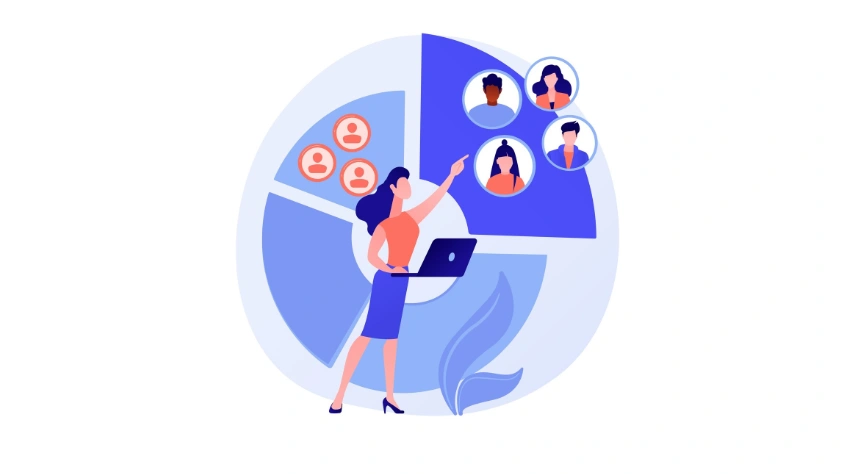
The key to efficient lead qualification isn’t about doing more frantically; it’s about doing the right things in the right order. These tailored lead qualification steps will help you refine your lead qualification process across different sales motions.
B2B Lead Qualification
In B2B, you’re rarely selling to a single individual. You can expect longer sales cycles, multiple stakeholders, and more scrutiny. Knowing how to qualify B2B leads is essential to maintaining momentum and not wasting time.
What to do:
- Qualify both the company (fit) and the contact (authority)
- Use MEDDIC or CHAMP frameworks to uncover process complexity and influence
- Ask detailed discovery questions about decision timelines, current tools, and objections
Tip: eSelf.ai automates early lead qualification stages by collecting key insights such as job roles, pain points, and budgets before your sales team gets on a call.
B2C Lead Qualification
In B2C, decisions occur faster, and buyers are more emotionally driven. Lead qualification is about speed, timing, and simplicity. Knowing how to qualify your leads quickly can make or break the sale.
What to do:
- Use intent signals such as cart activity, page views, or time on pricing pages
- Utilize urgency close tactics
- Automate screening with quick-response AI bots
Tip: eSelf.ai enhances how to qualify a sales lead by offering personalized experiences in real-time, replacing impersonal forms with conversational engagement.
SaaS and Subscription-Based Models
Here, product engagement is your strongest signal. Don’t wait for prospects to book a discovery call; watch what users actually do.
What to do:
- Identify product-qualified leads (PQLs), users who hit key milestones
- Utilize the CGPT model to understand the goals behind their usage
- Automate outreach by tracking activation milestones
Tip: Combine AI (e.g., eSelf.ai agents) with CRM workflows to nurture at the exact moment leads are ready to react.
Inbound vs Outbound Leads
Understanding how to qualify inbound leads versus outbound ones is essential. They come with different levels of intent and require different tactics.
- Inbound: Utilize behavior-based cues such as download counts, email opens, and trial activity. eSelf.ai’s agents can interact in the moment on landing pages to move leads forward.
- Outbound: All discovery is manual, with a focus on initial screening and early qualification questions. Rely on a strong first-tough messaging and targeted questions to uncover potential quickly.
Tools and Technology to Improve Lead Qualification
Modern lead qualification is impossible without the right technology stack. These lead qualification tools help your team qualify leads faster, reduce drop-offs, and capture context before the first sales call.
- CRMs (Salesforce, HubSpot): A command center to store, segment, and automate lead handoffs across the funnel.
- AI-powered chatbots: Handle common qualification questions in real time—screening leads and routing them accordingly.
- Calendly & Zoom: Automate scheduling while embedding qualification fields in booking flows.
- AI sales Agents: Tools like eSelf.ai represent the next evolution of chatbots. These lifelike agents conduct real sales conversations, ask tailored questions, guide leads through qualification, and seamlessly hand off to sales reps to close.
These lead qualification tools don’t replace your salespeople—they elevate them. By automating repetitive and early-stage of lead qualification tasks, reps can focus on what they do best: closing deals.
Common Mistakes to Avoid When Qualifying Leads
Even the most seasoned teams make lead qualification mistakes. This may be due to outdated habits, siloed tools, or unclear frameworks. Here are some common mistakes to watch out for:
- Relying solely on your gut feeling
- Qualifying too early, potentially missing any nuance
- Waiting too long, leading to your lead losing interest
- Ignoring red flags that disqualify your lead
- Failing to update your scoring models over time
Avoiding these mistakes will not only improve your process on how to qualify a lead but also make your pipeline leaner, smarter, and more profitable.
Red Flags that Disqualify a Lead
You can walk away. The best closers know when it’s time to move on. Disqualifying a lead is not a failure; it’s a smart allocation of resources. Here are five red flags to watch for:
- No Budget or timeline
- Not a decision-maker
- Only browsing language
- Not a relevant industry
- Already using a competitor with no intention to switch
Remember, disqualifying a lead isn’t rejection, it’s strategic focus.
Lead Qualification Checklist for Faster Conversions
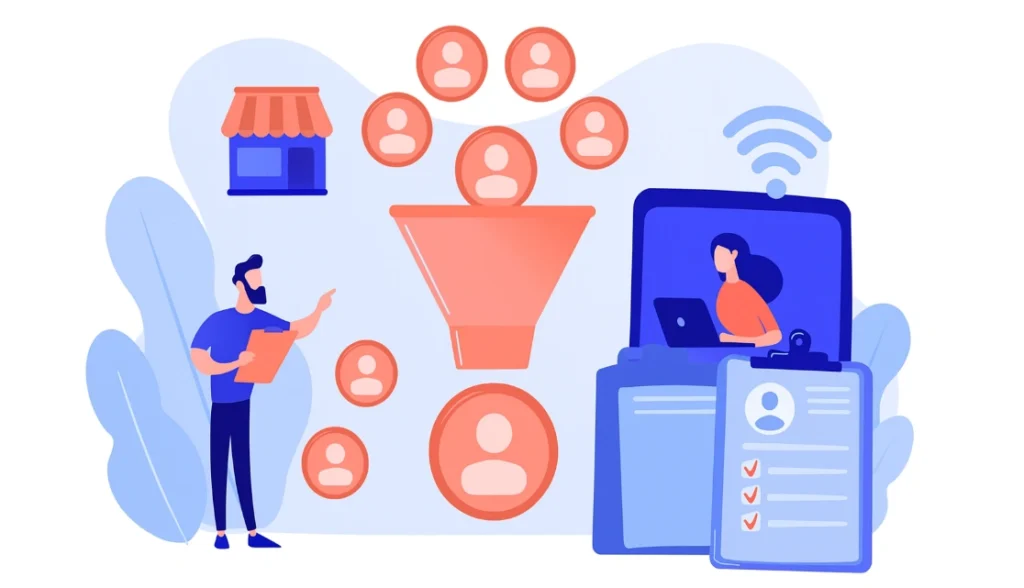
Before handing off a lead to sales or before logging the prospect as disqualified, run them through this quick lead qualification checklist:
ICP match — Does this lead align with your Ideal Customer Profile?
Need confirmed — Is there a real problem your product solves?
Budget exists — Has funding been allocated, or is the budget attainable?
Authority identified — Are you speaking with or connected to a decision-maker?
The timeline is actionable — Is there urgency or a defined buying window?
Product fit validated — Does your solution align with the lead’s requirements?
Lead properly scored and routed — Have they been tagged and assigned correctly?
Conclusion
Mastering how to qualify leads is the foundation of sustainable growth and stronger revenue performance. When done right, it transforms your sales motion from reactive to repeatable, helping your reps spend less time guessing and chasing, and more time closing.
With tools such as eSelf.ai, qualifying leads in sales becomes continuous. Your AI agents can work 24/7, asking the right lead qualification questions, capturing real-time insights, and handing off leads that are ready to move forward. When your lead qualification is tight, your close rates rise, your pipeline stays healthy, and your revenue becomes more predictable.
FAQs
What is the first step in qualifying a lead?
The first step is defining your ideal customer profile (ICP) and qualification criteria before performing outreach.
How do I know if a lead is sales-ready?
The lead aligns with all key criteria: need, budget, timeline, authority, and they ask next-step questions.
Can small businesses automate lead qualification?
Yes, absolutely. Simple CRMs and chatbots can route and score leads. You can even use basic AI agents to help you save time.
What’s the best lead qualification framework for startups?
The BANT framework is particularly effective when speed is a priority for a startup. As your deals become more complex, consider using CHAMP or MEDDIC lead qualification frameworks.
How often should I update my Lead Scoring Model?
Ideally, you should review your lead scoring model every quarter, optimizing its criteria based on conversion trends.
What are the 5 requirements for a lead to be considered a qualified prospect?
Budget, Authority, Need, Timeline, Product Fit (BANT+Fit).
What is the best way to qualify leads?
Consider using a combined stack:
- ICP definition
- Lead scoring
- Qualification questions
- AI-assisted initial engagement
- Sales validation
Then route and nurture your leads accordingly.
